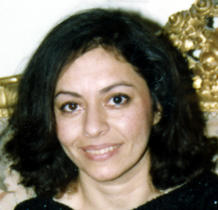- Speaker
- Prof. Roya Zandi
- Department of Physics & Astronomy, The University of California, Riverside, USA
- Abstract
Viruses infect all kinds of hosts (bacteria, plants, and animals), and with all degrees of severity (from the common cold to AIDS). They are surely amongst the simplest biological systems. Most of these viruses involve a spherical shell (capsid) which protects their genome (RNA or DNA). Under the appropriate solution condition, the protein subunits of a wide variety of RNA viruses can assemble spontaneously around its genome. Amazingly enough, despite the tremendous diversity in the protein “building blocks” of these capsids, the structures they adopt almost always have icosahedral symmetry. While it has been shown that this striking feature could be a consequence of a universal physical principle of energy minimization, in this talk I demonstrate that highly symmetric shells can readily grow from the irreversible addition of identical subunits. Our model of nanoshell assembly reproduces the main (T-) structures of viruses observed in vivo, as well as important non-icosahedral structures reported from in vitro studies. Further, I show that the spontaneous curvature of the subunit regulates the size of the shell while the mechanical properties determine the symmetry of the assembled structure. Understanding the underlying physical principles governing the stability of capsids is of paramount importance not only in the broader context of the hierarchical assembly of complex molecular structures in biology, but also in application areas including the design of antiviral agents, gene therapy and drug delivery.
- About the Speaker
Prof. Zandi's research interest lies in the fields of statistical mechanics and condensed matter physics. A principal area of current research is the statistical mechanics of virus assembly, both equilibrium and nonequilibrium aspects. She is interested in the influences of electrostatic and entropic mechanisms on the stability of viral structure and on the dynamics of the self-assembly process. Other current projects include the statistical mechanics of both neutral and charged polymers, the dynamics of the passage of polymers through membrane pores, knot theory and Casimir forces in superfluid films.
- Date&Time
- 2016-03-04 10:30 AM
- Location
- Room: A203 Meeting Room




